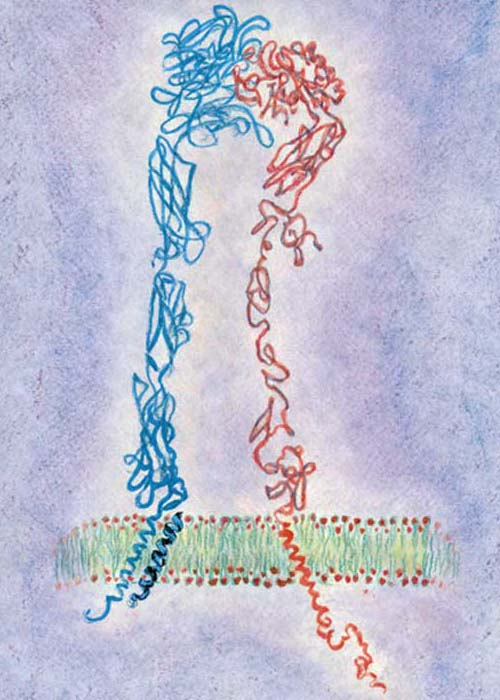|
The development of novel drugs capable to prevent cell
adhesion mediated by integrins is
relevant to discover novel drug targets in the field of allergy/inflammation
and cancer. We are interested in in vitro and in vivo assays with the aim to
characterize novel integrin antagonists. Levocabastine is an antiallergic drug
acting as a histamine H1-receptor antagonist, employed for the topical
treatment of allergic conjunctivitis (AC). In allergic conjunctivitis, it may
also antagonize up-regulation of the intercellular adhesion molecule-1 (ICAM-1)
expressed on epithelial conjunctival cells. However, little is known about its
effects on eosinophils, important effector cells in AC. Increased levels of
cell adhesion molecules on the microvasculature and factors that regulate them
are likely to be responsible for the conjunctival infiltration of circulating
cells and may perpetuate inflammation in AC. The central mechanism in the We have provided evidence that in a scintillation
proximity assay levocabastine displaced 125I-FN binding to human
integrin a4b1 and, in flow cytometry analysis and antagonized the binding of a
primary antibody to integrin a4 expressed on the Jurkat cell surface. Levocabastine,
but not chlorpheniramine, binds the a4b1 integrin and prevents eosinophil adhesion to VCAM-I,
FN or human umbilical vascular endothelial cells (HUVEC) in vitro. Similarly,
levocabastine affects aLb2/ICAM-I-mediated adhesion of Jurkat cells. In a model
of AC levocabastine eye drops reduced the clinical aspects of the late-phase
reaction and the conjunctival expression of a4b1 integrin by reducing infiltrated eosinophils. We
propose that blockade of integrin-mediated cell adhesion might be a target of
the antiallergic action of levocabastine and may play a role in preventing
eosinophil adhesion and infiltration in allegic conjunctivitis. The synthesis and the
antiadhesion activity of libraries of peptidomimetics capable to recognize avb3 and a5b1 integrins and acting as
inhibitors of fibronectin adhesion to SK-MEL-24 and K562 cells is investigated.
To evaluate the potential activity as avb3 and a5b1 integrin inhibitors, we test their ability to
inhibit the adhesion of an several cell lines to a specific substrate.
|
. |
 pathogenesis of this disease is IgE-mediated mast cell degranulation and
infiltration and activation of T lymphocytes, basophils, eosinophils, and other
cells in the conjunctiva, with the involvement of conjunctival epithelial
cells. Its severity correlates with the degree of eosinophil infiltration into
the conjunctiva, which is mediated by chemokines that stimulate the production
of adhesion molecules like ICAM-1 and vascular cell adhesion molecule-1
(VCAM-1) on the endothelial cell surface.
pathogenesis of this disease is IgE-mediated mast cell degranulation and
infiltration and activation of T lymphocytes, basophils, eosinophils, and other
cells in the conjunctiva, with the involvement of conjunctival epithelial
cells. Its severity correlates with the degree of eosinophil infiltration into
the conjunctiva, which is mediated by chemokines that stimulate the production
of adhesion molecules like ICAM-1 and vascular cell adhesion molecule-1
(VCAM-1) on the endothelial cell surface.